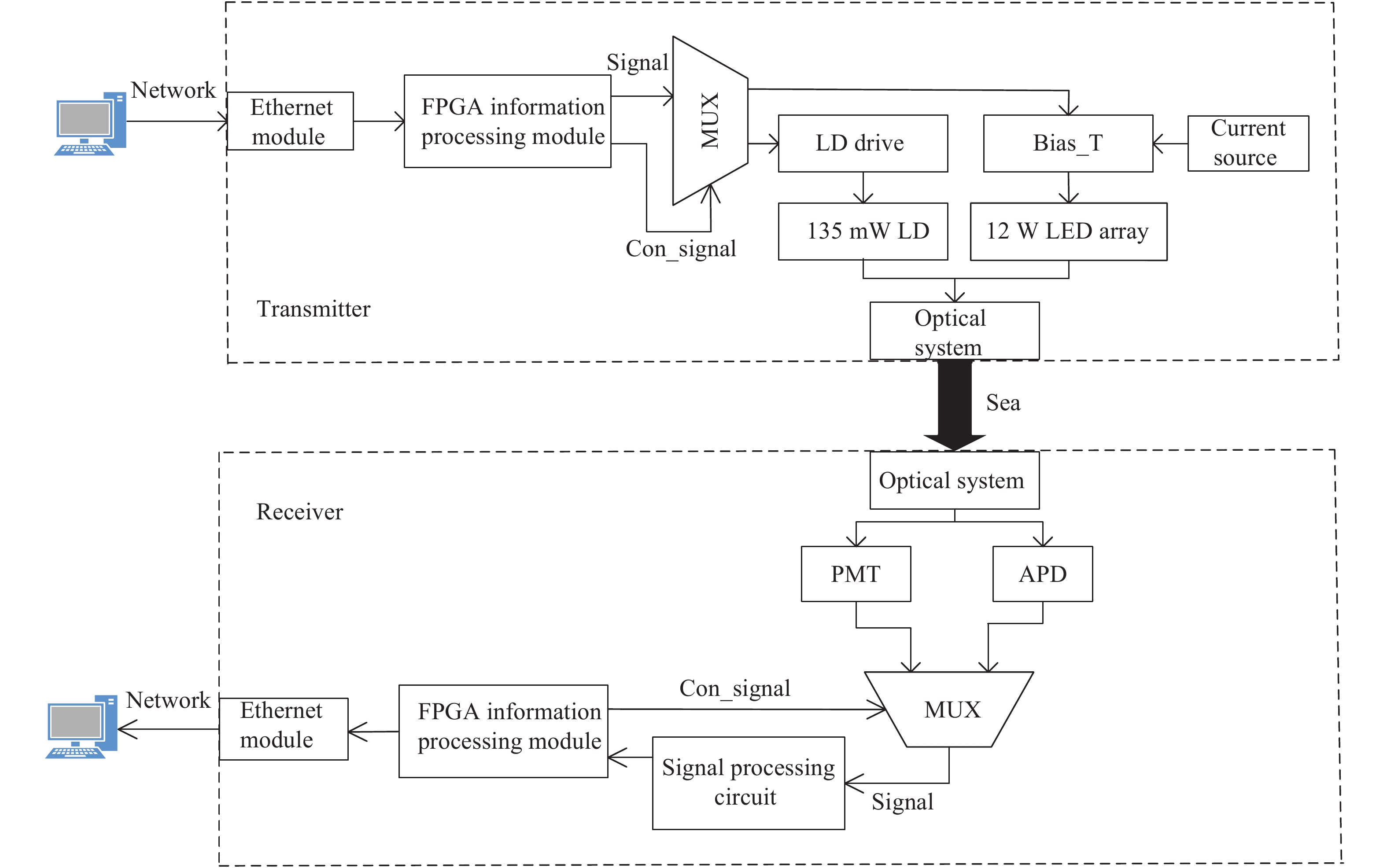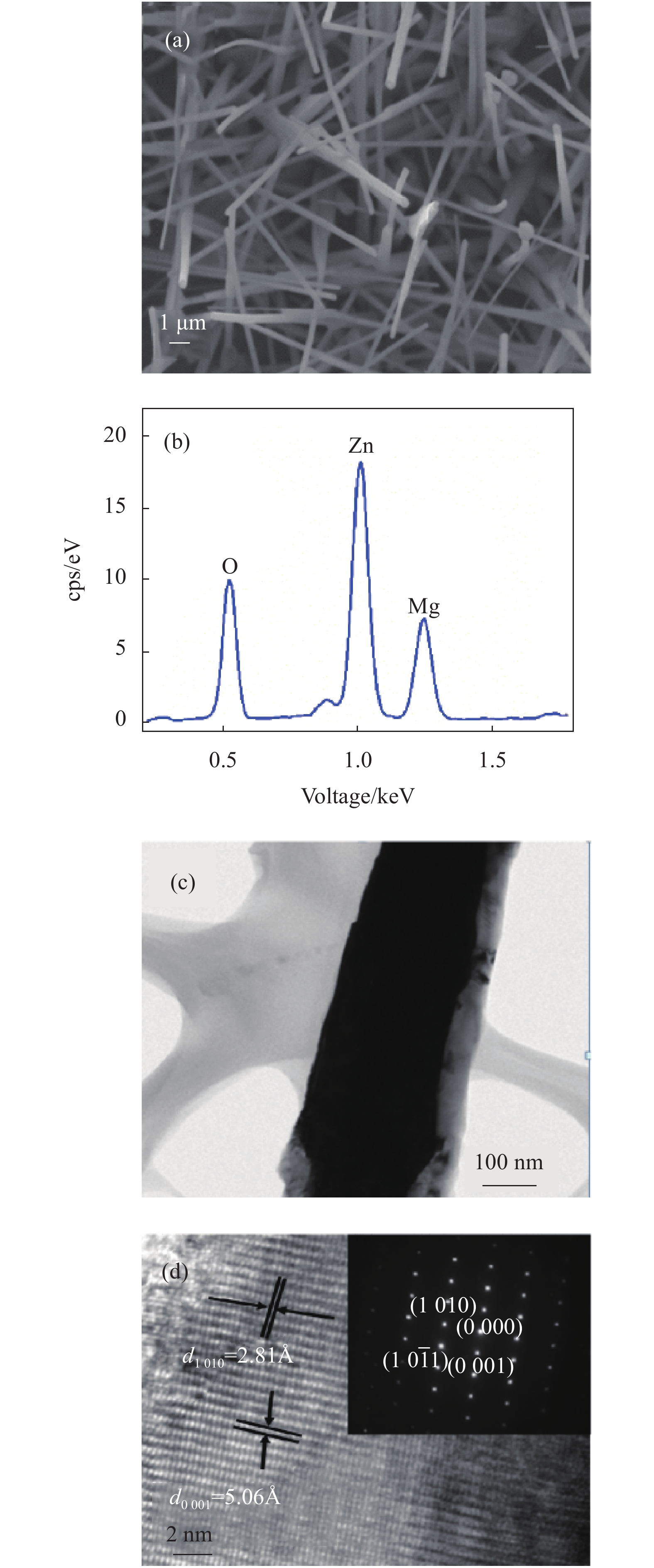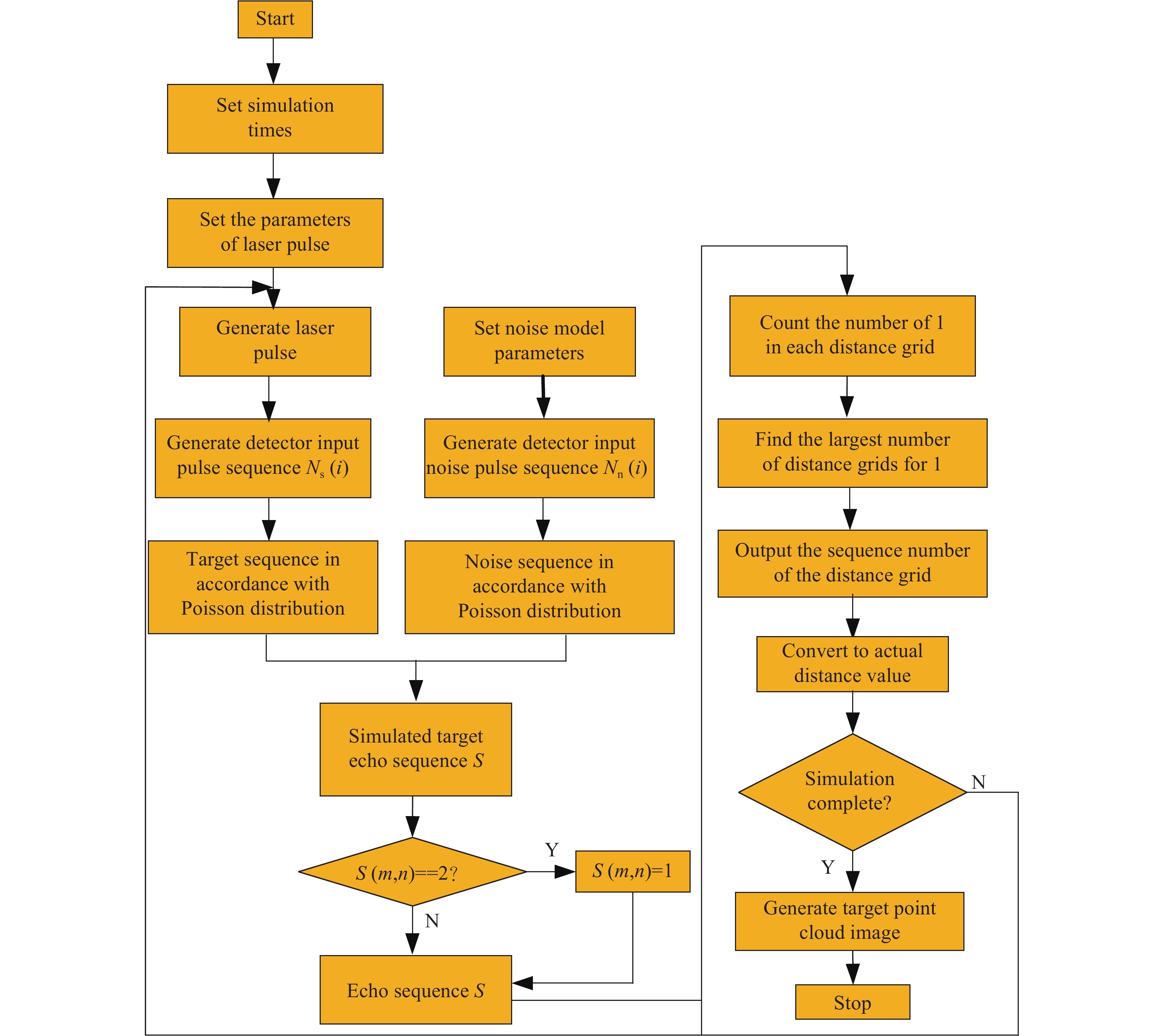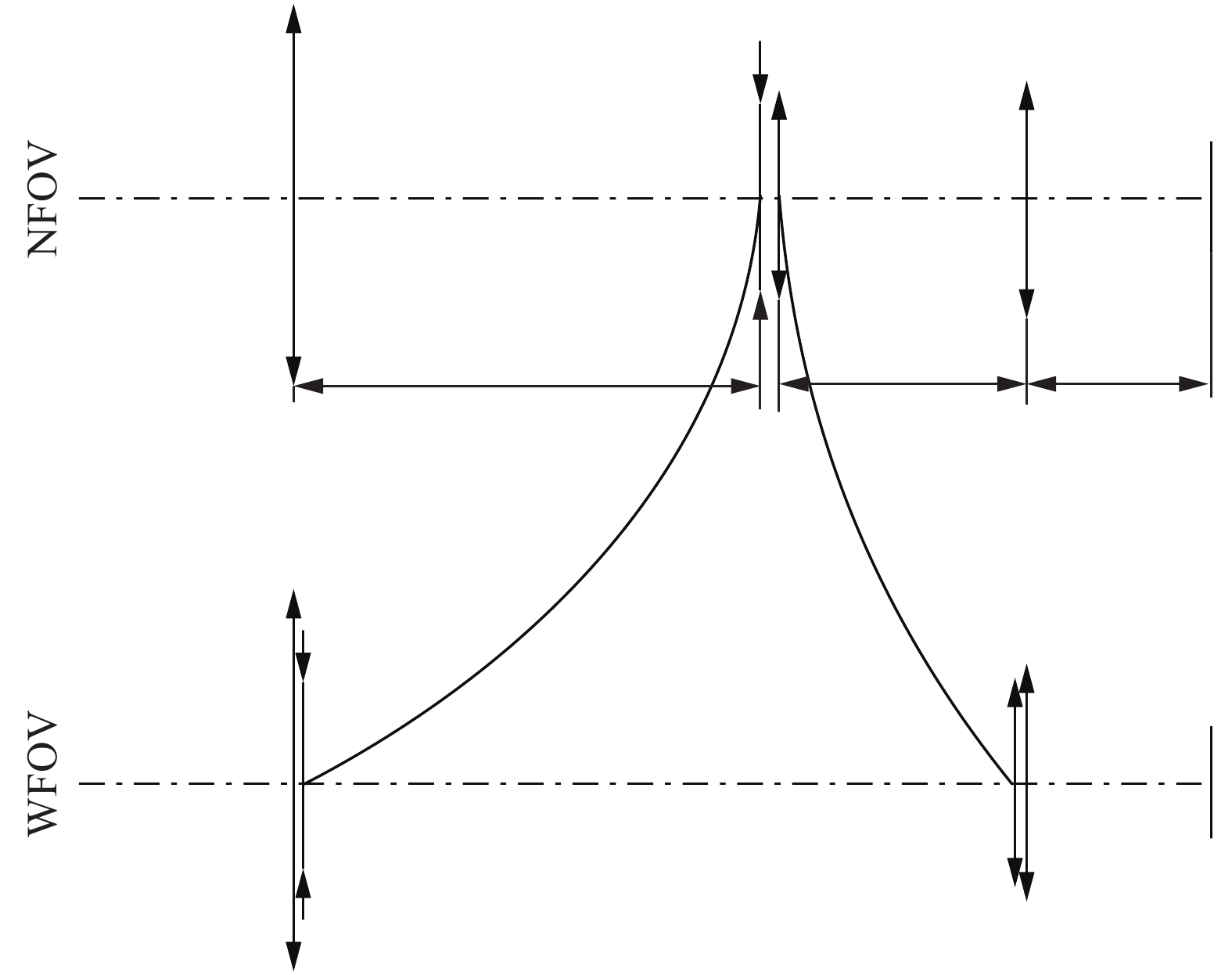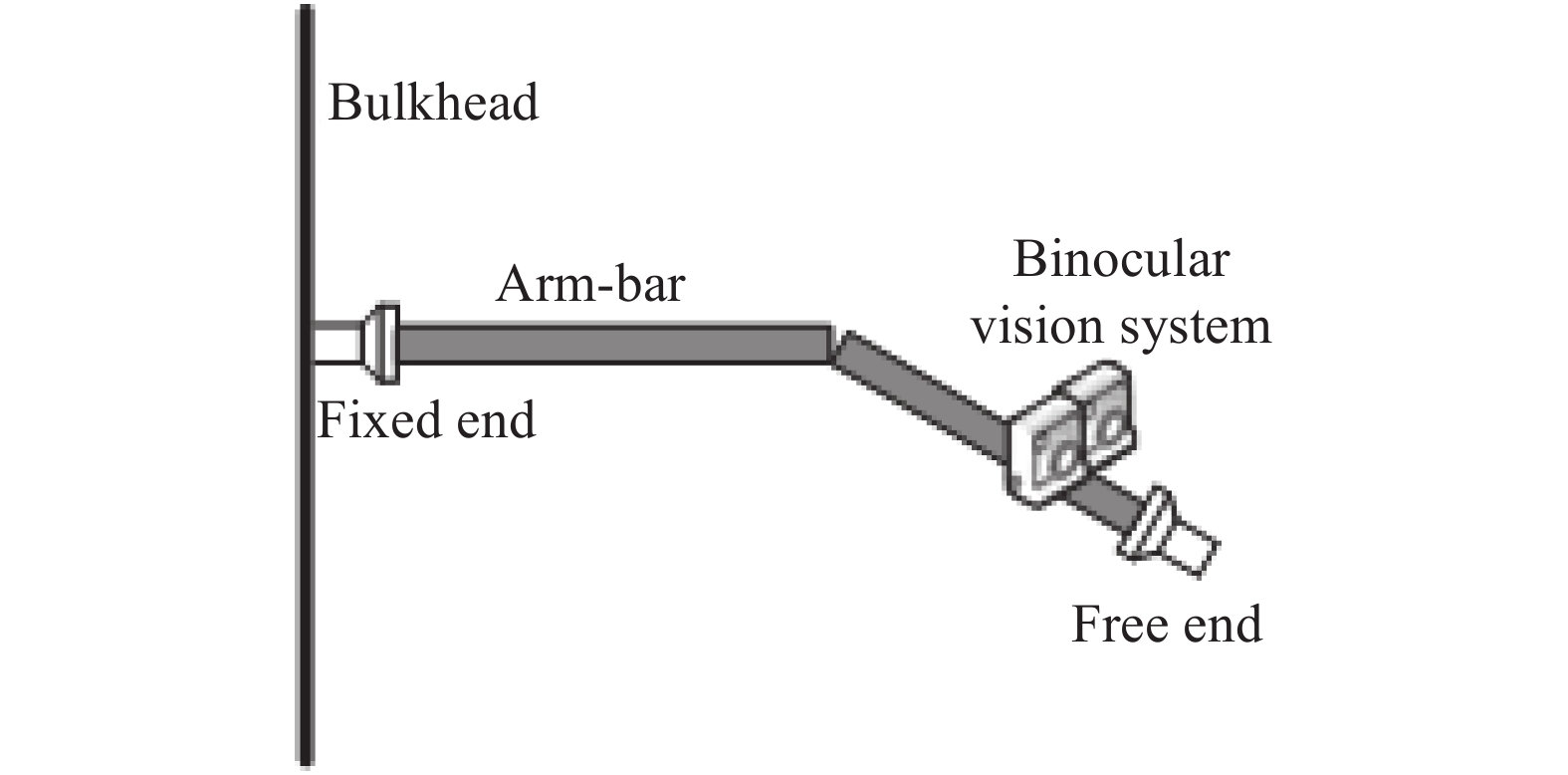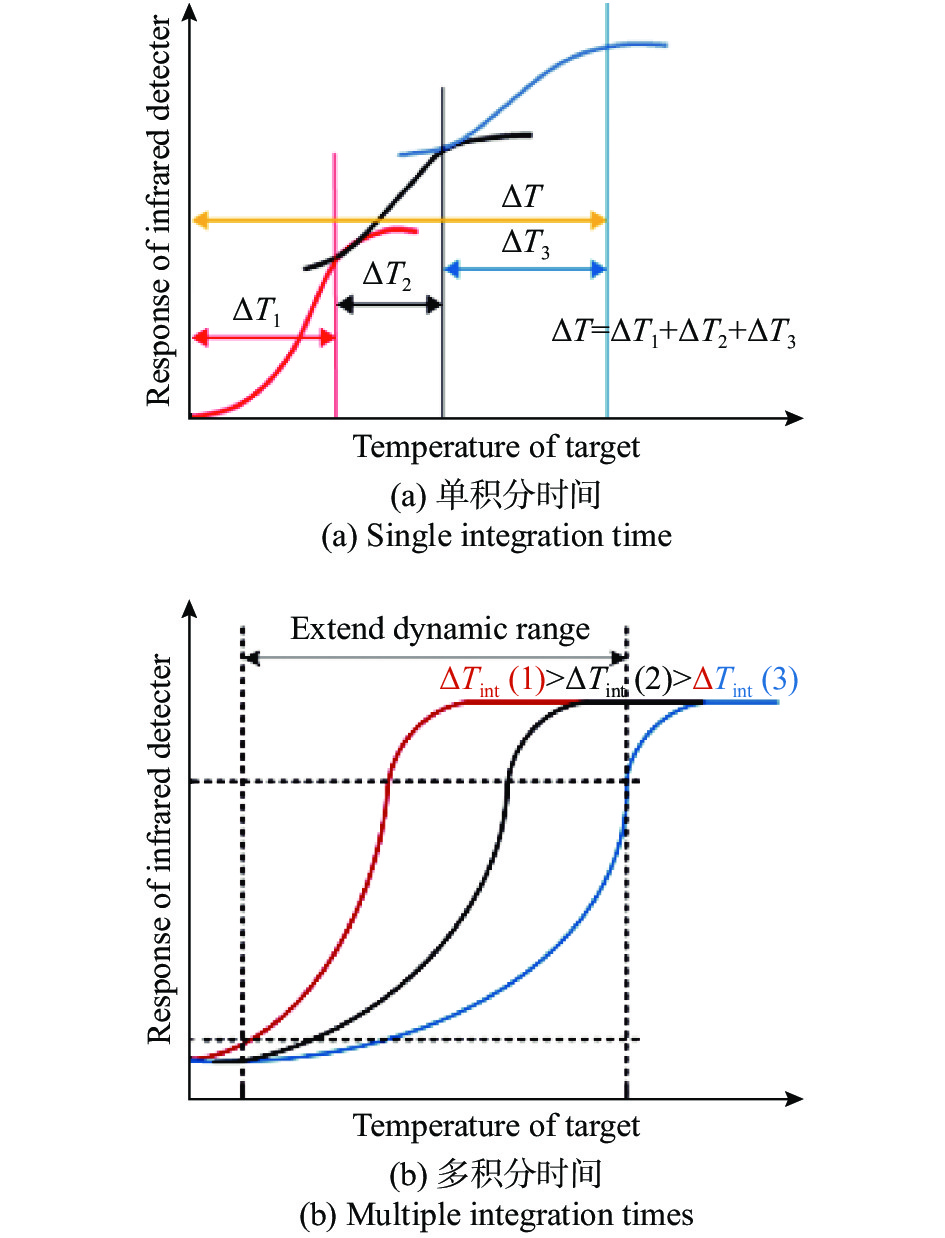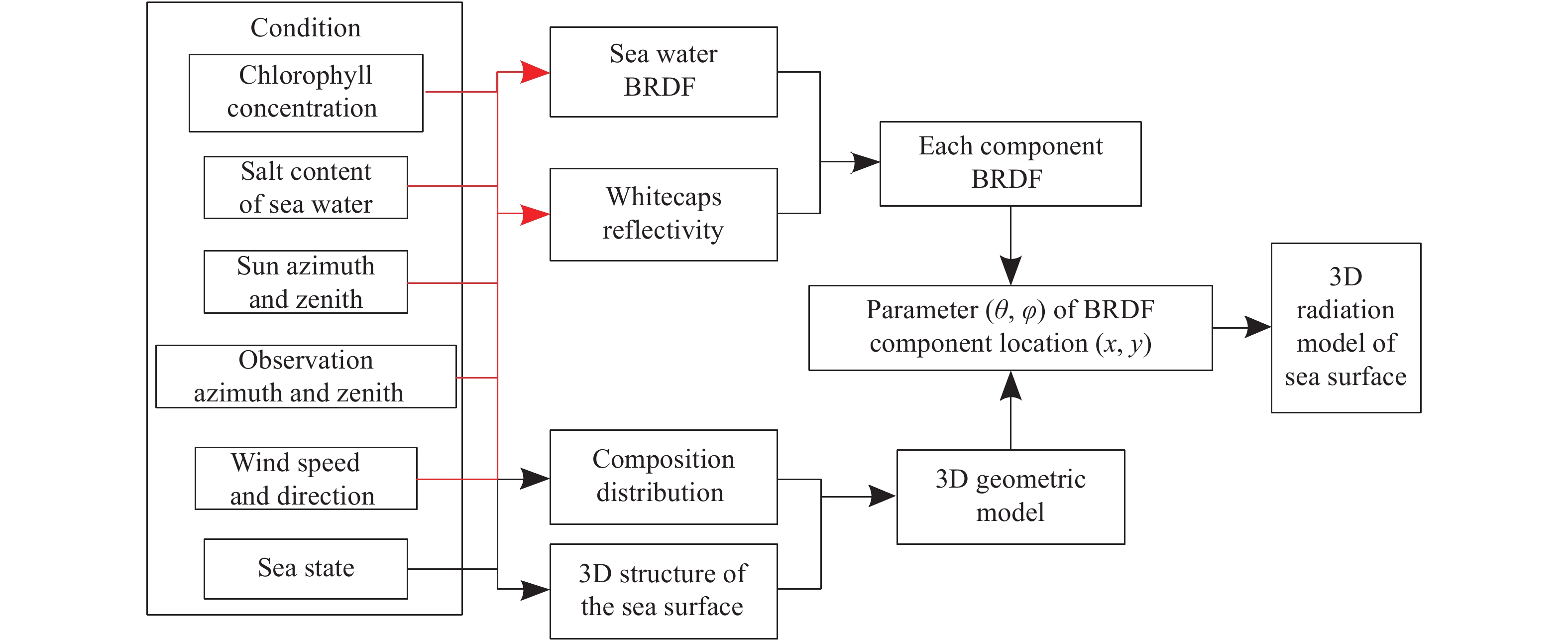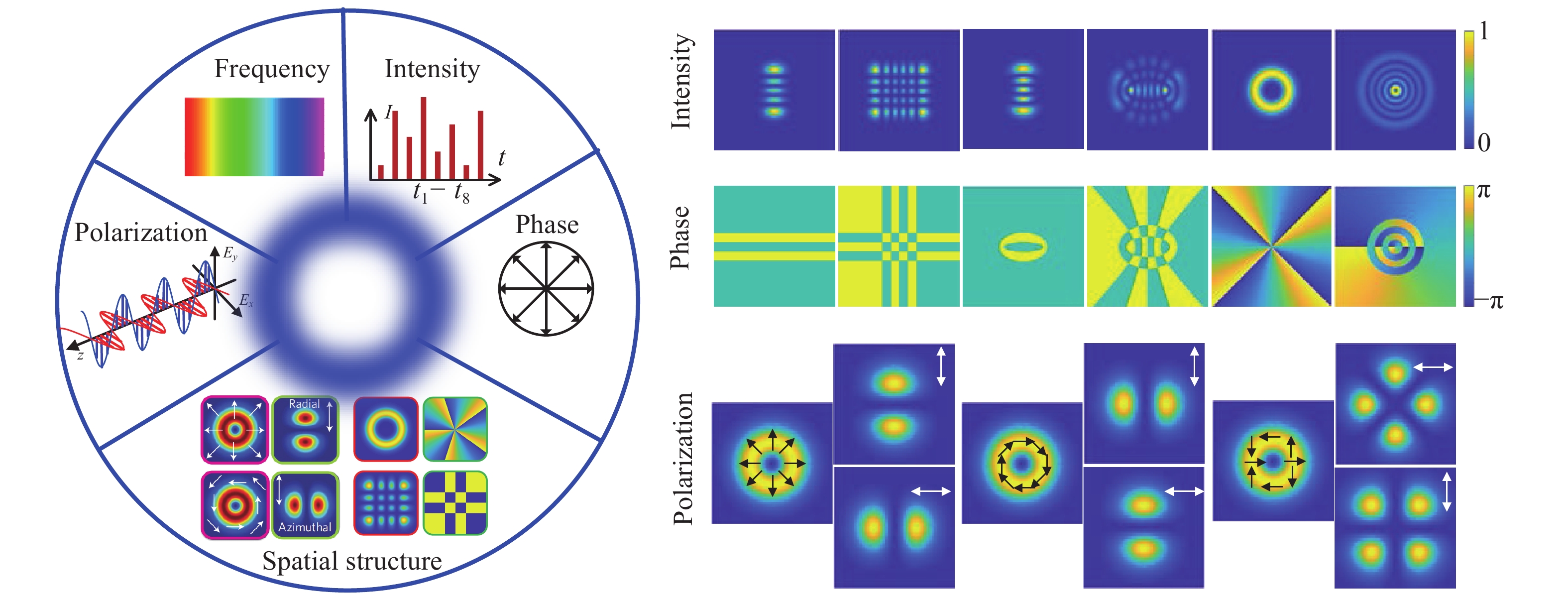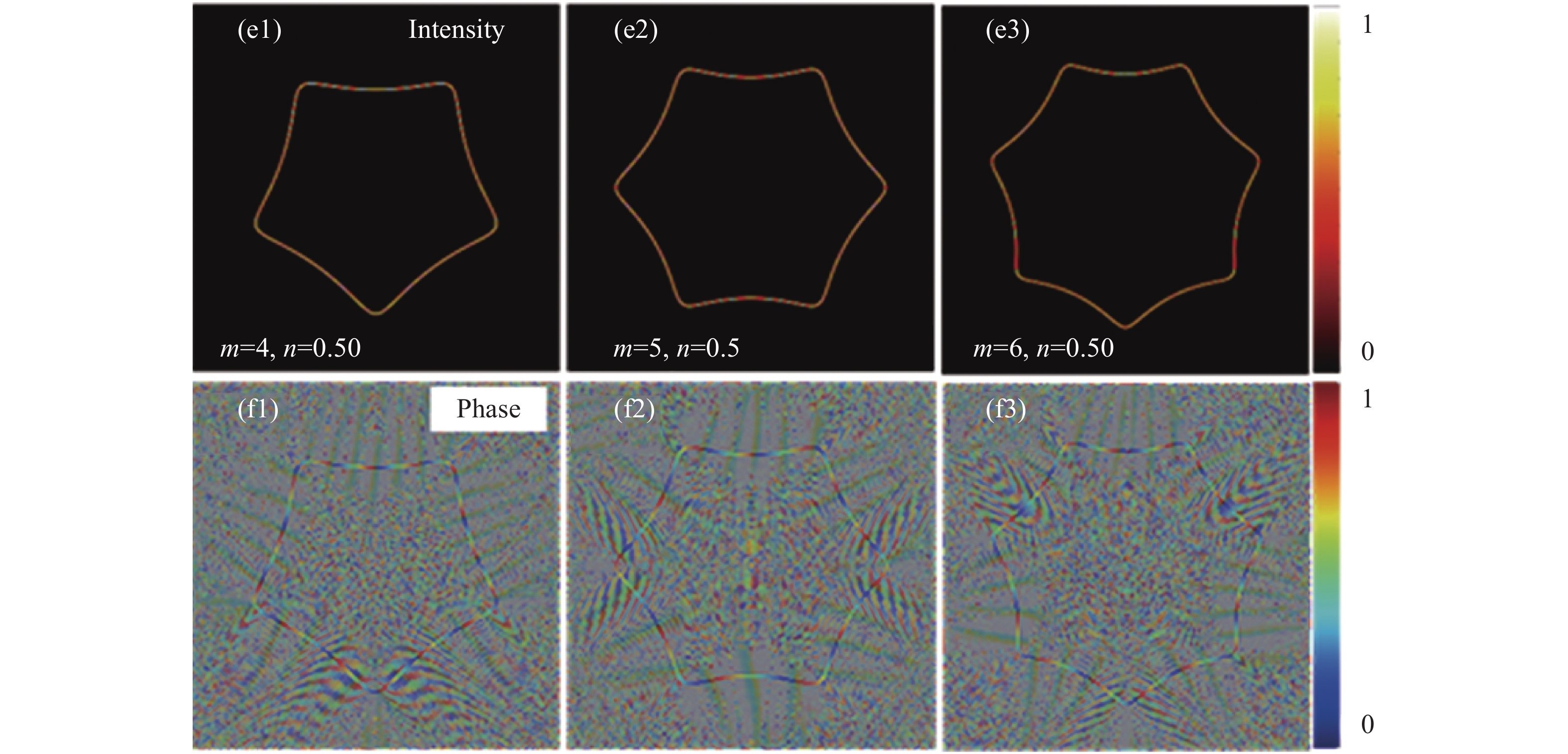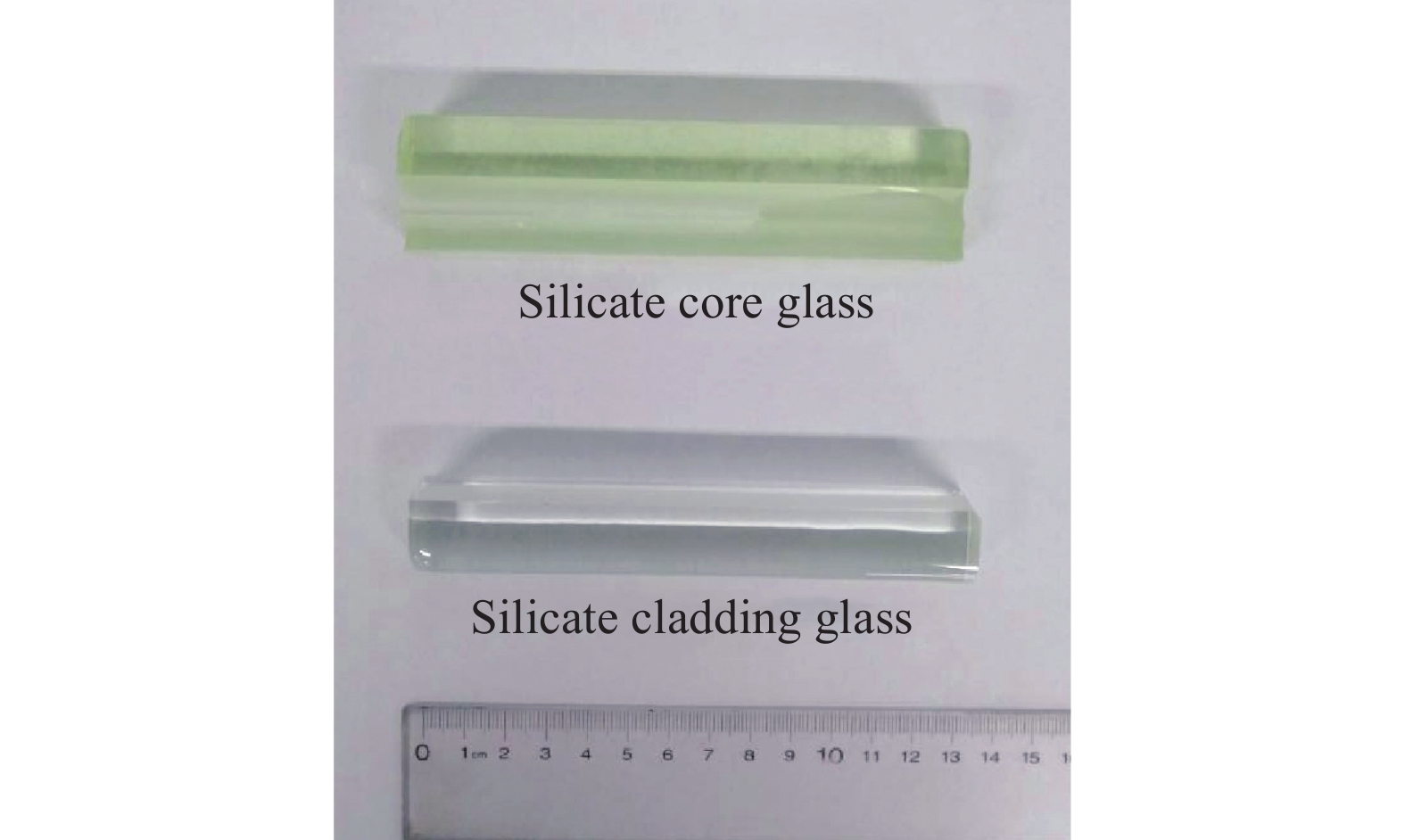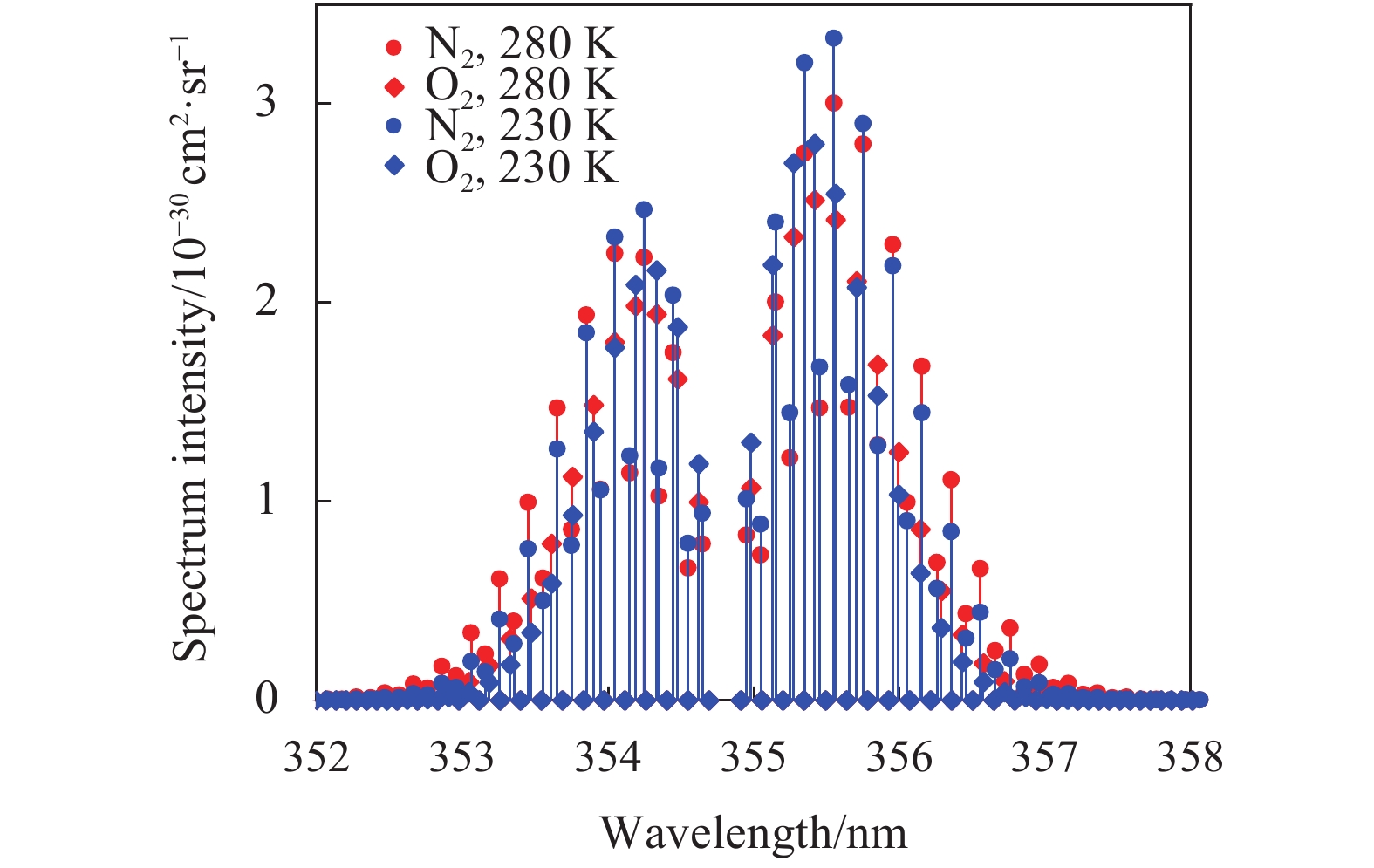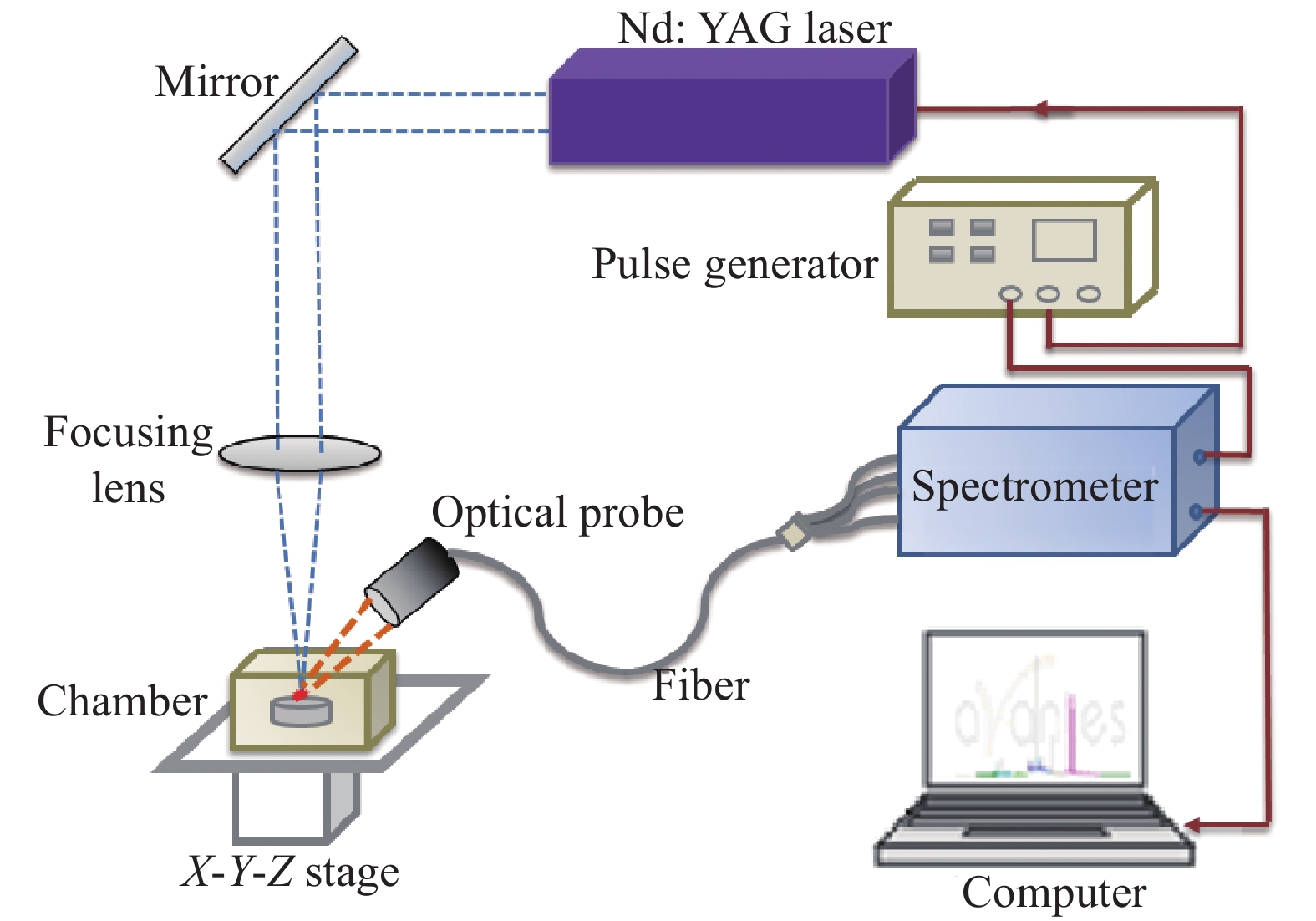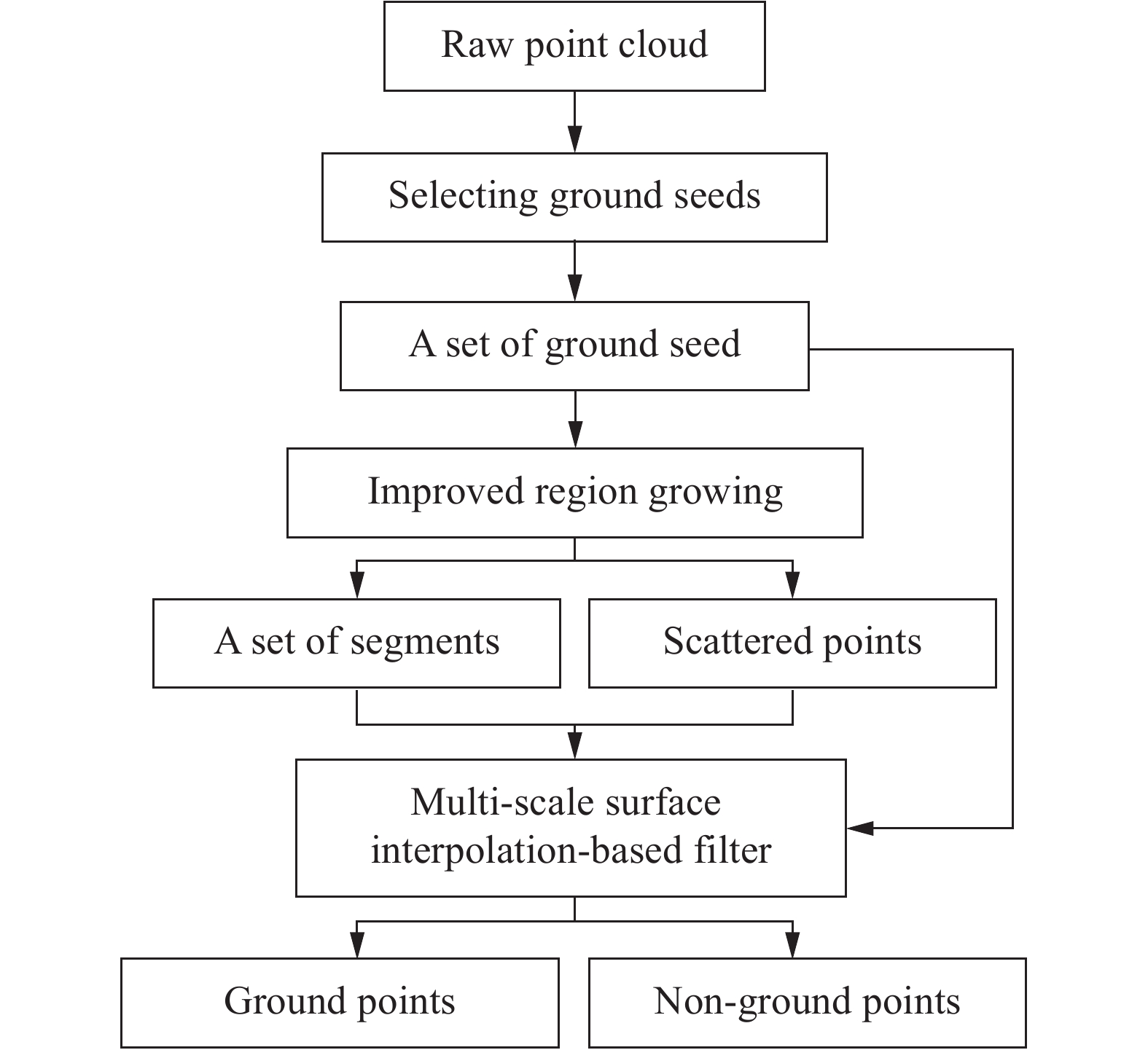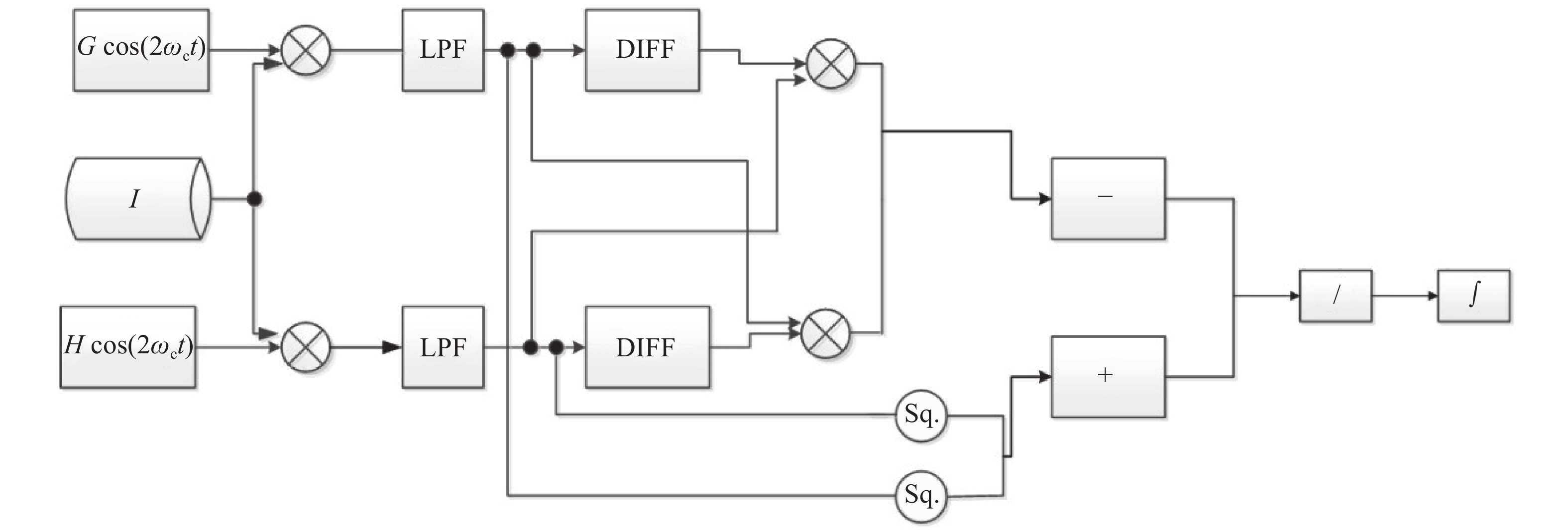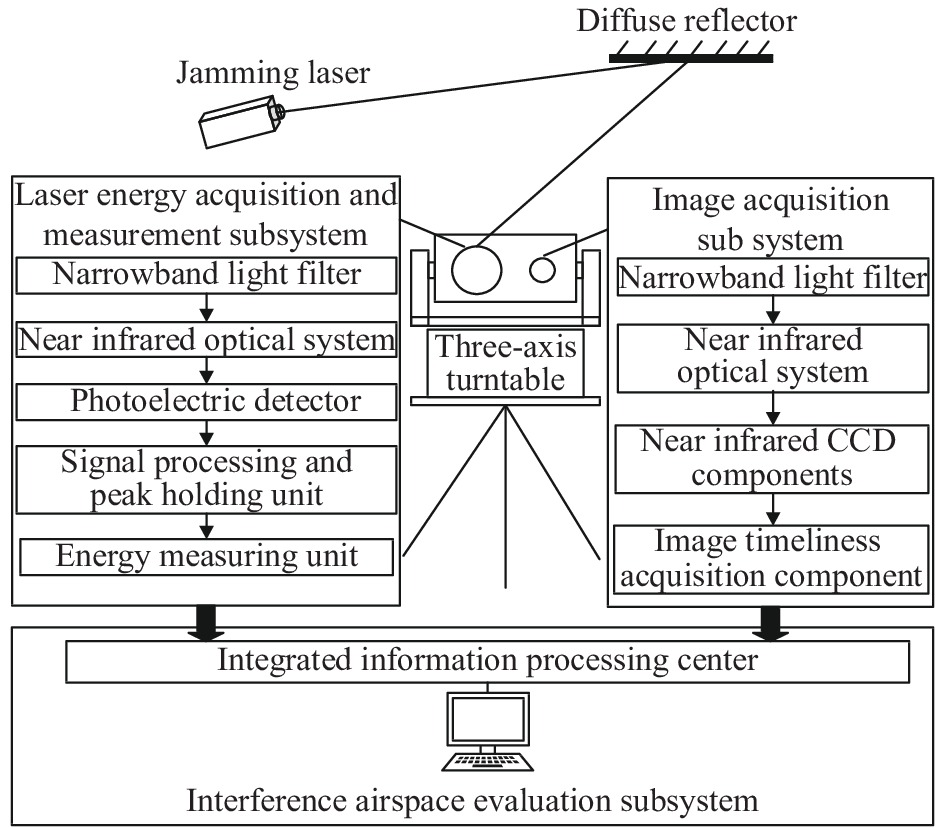2021 Vol. 50, No. 9
2021, 50(9): 20200445.
doi: 10.3788/IRLA20200445
With the deepening exploration of ocean, underwater wireless communication technology has become the key to restrict its development. Aiming at the requirement of high speed and long distance underwater wireless communication, an underwater bidirectional link communication system for marine commercial was designed. The laser LD and LED dual emission light sources were adopted at the transmitting end, the system design scheme of dual emission light sources was proposed, and the feasibility of the scheme by designing the corresponding drive circuits was verified. At the receiving end, 5 mm large-area APD and high-sensitivity PMT dual receiving detector were used to receive optical signals, which were suitable for long-distance and high-speed communication. The information processing part of the system was completed by FPGA, and information interaction was carried out with PC through network communication. Finally, the whole system was designed and commercialized. The underwater simulation experiment shows that the communication rate of the system can reach 60 Mbps when the communication distance is 5 m and the bit error rate is 10−7. The communication rate of the system can reach 10 Mbps when the communication distance is 60 m and the bit error rate is 10−7.
2021, 50(9): 20210076.
doi: 10.3788/IRLA20210076
A silicon-based PIN detector was designed, which had large area and high response, the surface area of the PIN detector was 4.1 mm×13.8 mm, and the thickness was about 420 μm. The ring-shaped Al electrode was used to extract the photocurrent signal in the photosensitive surface of the PIN detector. The test was performed under a constant laser light source with a wavelength of 860 nm, and its responsivitywas 0.6 A/W. Next, a new feasibility method for photoelectric monolithic integration was proposed, that is, by using the intrinsic I layer area of the non-illuminated area of the PIN detector, a transimpedance amplifier compatible with the structure and process of the PIN detector was designed, the photoelectric monolithic integration of the PIN detector and the transimpedance amplifier was realized on the premise that the structure and performance of the PIN detector had not changed. Finally, under the actual pulsed laser signal with a wavelength of 860 nm, a pulse width of 100 ns, and a working frequency of 10 kHz, the pulse response of the successful tape-out PIN detector and the photoelectric monolithic integrated chip was compared and tested. The results show that the pulse voltage signal of the photoelectric monolithic integrated chip is amplified by 1000 times compared with the pulse photocurrent signal of the PIN detector, while the pulse width is basically unchanged, the amplification factor is consistent with the theoretical transimpedance value of 1000 Ω. The integrated photoelectric chip is used in the laser receiving module of the laser fuze system. Through photoelectric monolithic integration, the signal-to-noise ratio of the output signal on the PIN detector can be improved, and the stability of the system can be enhanced, it can also meet the needs of the miniaturization of the laser fuze system.
2021, 50(9): 20200448.
doi: 10.3788/IRLA20200448
To solve the problem that ZnO ultraviolet photosensors is poor in detecting deep ultraviolet light, a method of fabricating Mg doped ZnO nanowires was proposed to adjust the ZnO energy band, so as to improve the sensitivity of ZnO ultraviolet photosensors in detecting deep ultraviolet light. The MgZnO nanowires were characterized by scanning electron microscope(SEM), energy spectrum analysis(EDS), transmission electron microscope(TEM) and other characterization methods. The results show that MgZnO nanowires were successfully prepared. The ZnO nanowire detector and the Mg doped ZnO nanowire detector were test with the 254 nm deep ultraviolet light, and the test results show that the photoresponse of the Mg doped ZnO detector to the 254 nm deep ultraviolet light was enhanced, the photocurrent increased from 0.02 μA to 0.57 μA. The detector is prepared by Mg doped ZnO nanowires, which can effectively improve the ZnO nanowires detectability in detecting deep ultraviolet light. It will provide beneficial reference for the design and preparation of deep ultraviolet detectors.
2021, 50(9): 20200528.
doi: 10.3788/IRLA20200528
Optical filter is widely used in multi-spectrum imaging of space remote sensor. Usually the base of the filter is optical glass. And optical coating on the glass is used to filter the specific spectrum. Plane wave transmitted wavefront testing is the main technique used to evaluate the wavefront distortion of the filter. The wavelength of the light interferometer uses is fixed. It can not cover the filter’s spectrum. And it is impossible to test every spectrum transmitted wavefront of the filter. In order to solve this problem, one solution was provided in this article. The interferometer with one fixed light wavelength was used. The front and back surface sag data, transmitted wavefront data of the filter before coating, and the front and back surface sag data after coating were used in a special algorithm together, the plane wave transmitted wavefront of the filter after coating can be obtained. The theoretical derivation of the algorithm was fully discussed in this article. And the experiments show the error of the transmitted wavefront RMS can be less than 0.004λ (λ=632.8 nm). The technique can be applied on the testing of infrared filter, experiments show the error is about 0.002λ (λ=3.39 μm), The accuracy requirement is satisfied and the cost is reduced.
2021, 50(9): 20200456.
doi: 10.3788/IRLA20200456
Pulverized coal fineness is one of the key parameters in the operation of coal-fired power plant, which is closely related to the combustion efficiency of boiler, power consumption of pulverizing system and equipment wear. In this paper, an experimental study on on-line monitoring of pulverized coal fineness by digital holography was carried out. An on-line measurement system based on pulse digital in-line holography was established. The system included four main parts: sampling, measuring, collecting and data processing. The measurement system was applied to the pulverized coal fineness monitoring in two primary air pipes of a 300 MW unit. The pulverized coal flow in the two pipes were from two different mills. The self-developed reconstruction software was used to process the holograms in real time and output the fineness results. The pulverized coal samples collected by the system were sieved in the laboratory, and the sieving results were compared with the holographic results to verify the feasibility and accuracy of the measurement system. Results show that the holographic results of area distribution are basically consistent with the sieving results, and the average absolute deviation is less than 4%. The test also diagnose that the coal fineness of one mill deviates greatly from the designed value, proving that the measurement system has great application potential for on-line monitoring of pulverized coal fineness in coal-fired power plants.
2021, 50(9): 20200402.
doi: 10.3788/IRLA20200402
Ground target measurement is of great significance to improve the ranging accuracy of SLR system, which can obtain the system delay and calibrate the system error. Based on the principle of ground target measurement with SLR, the model of ground target ranging was established by using Monte Carlo method, and the SLR ground target ranging simulation was realized. From the view of noise, the method of adaptive noise correlation matching(ANCM) algorithm was proposed to eliminate the noise in ground target ranging data. The echo noise template was constructed based on the actual measured data of short-term static background noise and the threshold value of random noise, combined with the simulated ranging data generated by SLR ground target measurement model, by optimizing the selection interval of data, the iteration times and other parameters, the effective return signal of ground target was extracted. Compared with traditional ground target data processing algorithm, the effective return points from ground target in Changchun Observatory/National Astronomical Observatories, Chinese Academy of Sciences is increased by more than 30% with ANCM algorithm, the ranging accuracy of data processing is improved by around 2 times, the efficiency of ground target data is significantly improved, it also provides a new idea to obtain the delay value of SLR system accurately.
2021, 50(9): 20200484.
doi: 10.3788/IRLA20200484
In response to the increasingly complex indoor environments where a single positioning system is no longer able to satisfy positioning precision demands, an indoor positioning method applying Ultra-Wide Band (UWB) ranging and inertial navigation fusion was proposed. First, the problem that UWB ranging results were proved to be affected by the environment was given, UWB ranging calibration was carried out in the experimental environment. Thereafter, the outliers in the ranging process were eliminated by applying the modified Mahalanobis distance outliers detection method. Then, a tightly coupled Kalman filter was adopted, where UWB ranging values were taken as the extended Kalman filter observation quantity, the position and attitude of the inertial navigation were taken as the extended Kalman filter prediction value, and UWB ranging values were used to constantly correct the position and attitude data of the inertial navigation solution. Finally, to verify the feasibility and effectiveness of the proposed method, trolley-mounted rectangular motion experiments were conducted with UWB positioning alone, as well as positioning by UWB and inertial navigation fusion. According to the comparison of experimental data, in interfered rectangular trajectory positioning experiments, when UWB was combined with inertial navigation positioning, the average precision was increased by 36.6% than that with UWB positioning alone; The comparison of the error results show that the error fluctuation of the fusion positioning using UWB and inertial navigation is smaller, but with higher robustness; The results indicate that, compared with algorithms utilizing the UWB technology alone for positioning, such fusion positioning algorithm can effectively suppress interferences in the positioning process. Furthermore, the robustness and positioning precision of the positioning system in indoor environments can be significantly improved.
2021, 50(9): 20200435.
doi: 10.3788/IRLA20200435
In order to realize accurate calculation of field of view(FOV) overlap between sub eyes of compound eye system, reduce the number of sub eye systems, and make the system miniaturized and lightweight, a FOV overlap calculation model was proposed. Firstly, the relationship between the sum of FOV and the included angle of optical axis was analyzed. Based on the coordinate relationship between the edge points of FOV, a calculation model of FOV overlap rate was established, which was related to the included angle of optical axis, the angle of FOV and the observation distance. Through the analysis of this model, the angle of the optical axis between the sub eyes in the compound eye system should be less than the sum of the field angles of the sub eyes, and greater than the difference of the field angles of the sub eyes; at the observation distance of more than 3 km, the overlap rate of the field of view between the sub eyes tends to be fixed with the observation distance. According to this model, a 19 aperture compound eye system was designed. The experimental results show that the compound eye system can achieve 79.23° full field of view without blind area monitoring. The actual overlap rate of sub eyes between the first level array is 71.16% and 45.99% in the X and Y directions respectively; the actual overlap rates of the sub eyes between the first and second level arrays are 43.00% and 18.36% respectively in the X and Y directions, respectively. The actual overlap rate was 14.62% when there was overlap in direction X, and 66.58% and 24.6% in X direction and Y direction respectively. The theoretical overlaps were 75%, 40%, 40%, 20%, 15%, 70%, 30%, respectively. Through the comparative analysis of the actual overlap and theoretical overlap, the feasibility of the field overlap calculation model is verified.
2021, 50(9): 20210090.
doi: 10.3788/IRLA20210090
The primary aberration of each lens group will be changed with their movement, and the change of environment temperature will also lead to defocus, both of which will cause a lot of difficulties in the zoom lens design process. To solve this problem, aberration functions do depend and not depend on group movement were introduced based on optical aberration theory, and lens power distribution and material selection method were discussed with the achromatic and athermal design model futher. A visible-near infrared (Vis-Nir) optical system under the requirements of F/5, focal length of 8-120 mm, focal plane diameter of 6.2 mm, work waveband of 0.48-0.68 μm and 0.7-0.9 μm was designed with mechanically compensated method and optical passive athermal technology. The proposed zoom lens system, which used 7 kinds of common optical glass, consists of 12 groups 16 lenses, total length of only 90 mm, has good image quality and tolerance character among the zoom range within −40~60 ℃.
2021, 50(9): 20210015.
doi: 10.3788/IRLA20210015
In the practical application of star sensors, the presence of stray light in the optical system will cause the star points to be blurred or blocked. Based on the requirements of the star sensor for aperture, field of view, spectral range and detection capability, the optical system design of star sensor was completed using Code V software. The final design parameters were 15 mm diameter, 18 degrees field of view, spectral range from 400 nm to 750 nm, detection capability 5 grade stars. A cone structure hood was designed with CAD drawing software, shading field of view boundary of the hood blade was 19°, and there were 9 light blocking rings in total. The front end face was 190.76 mm from the window glass, the front end face diameter was 108.76 mm, and the sun avoidance angle was 25°. At the same time, the ASAP software was used to analyze the optical system's ability to suppress stray light. According to the stray light evaluation index point source transmittance(PST), the system satisfies the detection capability requirements of 5th magnitude stars at a solar avoidance angle of 25°, which verifies the stray light analysis the correctness of methods and analytical models.
2021, 50(9): 20200525.
doi: 10.3788/IRLA20200525
As an import part of the space manipulator, the binocular vision system can guide the manipulator to localize and acquire the samples. The calibration of internal and external parameters is the primary premise and important guarantee for binocular camera to obtain the motion information such as the position and the direction of the cooperative target with high precision. A method for the calibration of internal and external parameters of the binocular camera based on bundle adjustment algorithm was proposed. A three-dimensional target was used as the calibration target, and the high-precision angle measuring equipment theodolite was used as the precision measurement reference. And then the internal and external parameter of manipulator binocular vision system could be calculated. The experimental results show that the camera internal parameter reprojection error is less than 0.5 pixel, and the accuracy of the external parameter test is ±0.19 mm, which is able to satisfy the test needs and the test precision. This method offers a meaningful principle of integration and adjustment of manipulator binocular vision system.
2021, 50(9): 20210526.
doi: 10.3788/IRLA20210526
To adapt to high performance thermal imaging application in the background with strong radiation such as sun, interference bomb and fire, high dynamic range (HDR) thermal imaging with adaptability for strong radiation interference scenes of temperature difference beyond the range of 1 000-5 000 ℃, had become a significant direction of development at home and abroad. Although there was no obvious difference between the dynamic range testing system of HDR thermal imaging system and traditional thermal imaging system, there was no suitable testing method and instrument now, and its core lay in the lack of large dynamic range dynamic infrared radiation source target. This article researched a dynamic range performance testing and evaluation method of HDR thermal imaging system, and designed a novelty HDR dynamic infrared radiation sources array target with temperature difference beyond 1 000 ℃ to realize the objective testing of HDR thermal imaging system dynamic range performance. The experimental results show that HDR dynamic infrared radiation sources array target meets the testing and evaluation requirement of temperature range, stability, accuracy, modulation frequency, etc. and can realize fast and reliable the dynamic range performance testing of HDR thermal imaging system. This technology is of guiding significance to the development of HDR thermal imaging technology research and system testing and evaluation.
2021, 50(9): 20200467.
doi: 10.3788/IRLA20200467
Infrared and visible image fusion combines the infrared thermal radiation information and visible detail information. The image fusion technique has facilitated development in numerous fields, including production, life sciences, military surveillance and others, and has become a key research direction in the field of image technology. According to the core idea, fusion framework and research progress of image fusion methods, the fusion methods based on multi-scale transformation, sparse representation, neural network, etc. are elaborated and compared, and the application status of infrared and visible light image fusion in various fields and the commonly used the evaluation index. The most representative methods and evaluation indicators are selected and applied to six different scenes in order to verify the advantages and disadvantages of each one. Finally, the existing problems of infrared and visible image fusion methods are experimentally analyzed and summarized , the development prospects of infrared and visible image fusion technology are presented.
2021, 50(9): 20210056.
doi: 10.3788/IRLA20210056
With the improvement of the camera resolution, it is necessary to improve the temperature level and temperature stability of the main body of the camera and to cool the detector to a lower temperature for infrared camera. However, the thermal environment of the geostationary orbit space is complex, the optical system of the camera is exposed to light for a long time and there has no long-term shadow side, which brings great challenges to the thermal control design of the camera. Combined with the characteristics of the geostationary orbit thermal environment and the imaging requirements of the camera, the shield & thermal cover were adopted to effectively shield the influence of the external heat flow, so as to control the temperature of the main optical system within (20±3) ℃, which provided temperature guarantee for the camera imaging time not less than 20 h/d. The high-efficiency heat insulation technology and high-efficiency heat dissipation technology were also adopted to control the detector below 80 K, which met the temperature requirements of the detector at imaging mode. The ground test and on-orbit data show that the thermal control design of the camera is reasonable and feasible, which provides a strong support for the subsequent high-precision temperature control of the high orbit infrared camera.
2021, 50(9): 20210531.
doi: 10.3788/IRLA20210531
In order to meet the needs of smart munitions to respond to complex confrontation combat, with the upgrading of key components such as high-performance detectors and information processors, engineering applications of target recognition technology based on deep learning have emerged, aiming at the future development trend of a new generation of photoelectric seekers, the multi-mode composite guidancing system, integrated miniaturization, and intelligent practical applications and low-cost design were expounded. The advantages of using multi-mode composite photoelectric seekers such as visible light, infrared and laser were analyzed to extend the range of missile terminal guidance, adapt to all-weather all-day work, and improve anti-jamming capabilities. It is pointed out that the overall integration of the optical machine and the integration of the information processing system are the key technologies to solve the miniaturization of the composite seeker. The intelligent characteristics of seeker such as automatic target recognition and multi-projectile coordination are emphasized. Proposals are put forward to realize the low-cost engineering application of photoelectric seeker by using technologies such as miniaturized common aperture multi-mode photoelectric composite detection, integrated information processing, low-cost technical system, low-cost manufacturing technology and low-cost combat support.
2021, 50(9): 20200514.
doi: 10.3788/IRLA20200514
The simulation of ocean background is the key link of sea surface target scene simulation and the important basis of ocean target background coupling simulation, which determines the correctness and authenticity of the difference characteristics between target and background in the simulation image. In the high-resolution satellite image, the ocean background features were highlighted. The previous processing methods that regard the ocean background as a uniform radiation surface cause large errors in high-resolution ocean scene simulation. The coupling effect and radiation model of three-dimensional shape, multi-component distribution and directional reflection characteristics of ocean background were studied, and the simulation method of high-resolution satellite image of ocean background was proposed. A three-dimensional ocean background model was constructed by spectrum analysis. According to the different distribution of sea components and the different normal directions of ocean background at different positions, the low-resolution ocean BRDF model was modified to meet the simulation application of high-resolution satellite images. The directional reflection data of different components were calculated and associated with the three-dimensional ocean background model to construct the sub meter ocean background three-dimensional model. Based on the radiation model, the zero line of sight radiation field was established by ray tracing method, and the satellite remote sensing images under different sea conditions were simulated by atmospheric influence and sensor effect. The results show that the average error of the image is 3.7% and the standard deviation error is 9.9% when comparing the sea surface image measured by ZY3-02 satellite with the simulation image under the same imaging conditions, which can simulate the marine background under high-resolution satellite imaging more truly.
2021, 50(9): 20200491.
doi: 10.3788/IRLA20200491
Through the introduction of deep learning, the accuracy and robustness of object tracking have been greatly improved. Siamese network based trackers can deal with various deformation of target through training on large-scale datasets, but that makes it difficult to eliminate the interference of similar targets. Therefore, a two-stage tracking method based on Siamese network was proposed. Firstly, the modified residual network was used to extract the deep feature with better performance. Through integrating the temporal information, the template of the region proposal network was adaptively updated through correlation filter modulation, so as to filter out the easily distinguished negative samples. Then, the fixed scale features of candidate regions were extracted by the region-of-interest pooling and fed to the verification network for more refined classification and regression. In order to improve the network's ability to discriminate difficultly distinguished samples, joined training method combining the positive and negative samples was adopted to improve the performance of feature matching. The performance of the proposed method was evaluated on the OTB100, VOT standard benchmarks and the UAV123 aerial benchmark. The experimental results demonstrate that the proposed method can significantly improve the performance of the baseline.
2021, 50(9): 20200529.
doi: 10.3788/IRLA20200529
Aiming at the problem of error accumulation in aerial array remote sensing image stitching algorithms, a method for eliminating cumulative errors in aerial array image stitching was proposed. First of all, the attitude information and position information of the aerial remote sensing platform were used to complete the projection transformation of each image and rough image stitching. The independence of image’s error in stitching after each projection transformation was ensured. Thereby the error accumulation in image stitching was avoided. Then, the SIFT algorithm was used to extract the image matching pairs point in the overlapping area of the rough stitching adjacent images. According to the position difference between matching pairs of adjacent images, the principle of error sharing was adopted, and independent slightly adjust and coordinate fine-tuning were performed one by one. Until a certain accuracy was met, the accuracy of image stitching was improved and the accumulation of errors was avoided at the same time. Finally, the image quality was evaluated by combining with subjective evaluation (Compare the geographic correspondence between the corrected satellite image and the stitched image in this article) and the objective evaluation (in SSIM algorithm). The theoretical analysis and experimental results show that this method can effectively avoid the problem of error accumulation in aerial array remote sensing image stitching. Compared with the current main splicing methods, this method can maintain consistency with the two-dimensional coordinates of geographic space, and has good practical value and application prospects.
2021, 50(9): 20200431.
doi: 10.3788/IRLA20200431
The problem of relative pose measurement of non-cooperative targets in space becomes the most difficult task of the in-orbit operation task. By clustering the three-dimensional point cloud of the target obtained by Lidar, a small-scale cluster point cloud with obvious characteristics is obtained, which effectively improves the registration efficiency and precision. Aiming at the problem that clustering algorithm based on region growth can not recognize clusters with similar features when clustering visible point clouds, a method for optimizing 3D point cloud clustering with 2D images was proposed. This method established a mathematical mapping relationship between the depth value information and the RGB color value. After the point cloud dimension was reduced, the boundary was extracted using the color gradient mutation, the points within the boundary were reversely restored to the original point cloud, and finally the various types of point clouds were combined to obtain a point cloud with distinctive features that were easy to recognize. The experimental results show that under the condition of the registration angle error is ±5°, the size of the point cloud can be effectively reduced and the significant features are preserved. It provide technical support and solutions for the real-time measurement of relative pose of non cooperative targets in space.
2021, 50(9): 20210094.
doi: 10.3788/IRLA20210094
Due to the ambiguity of anomaly definitions, the scarcity of anomalous data, as well as the complex environmental background and human behavior, video anomaly detection has always been a challenging problem in the field of computer vision. Existing anomaly detection methods based on deep learning often use a trained network to extract features or are trained based on the existing network structure, instead of designing a network for the goal of anomaly detection. In this paper, a new anomaly detection method—Deep Support Vector Data Description (DSVDD) was introduced, which was trained on an anomaly detection based objective. According to DSVDD, not only the smallest size data hypersphere coule be found to establish SVDD, but also useful data feature representations and normal models could be learned. Then, in the testing stage, the samples mapped inside the hypersphere were judged as normal, while the samples mapped outside the hypersphere were judged as abnormal. The method proposed in this paper achieves 87.4% and 74.5% frame-level AUC on the CUHK Avenue and ShanghaiTech Campus datasets, respectively, which outperforms existing state-of-the-art approaches.
2021, 50(9): 20210145.
doi: 10.3788/IRLA20210145
Since Allen et al. have shown that laser beams with helical wavefront carry orbital angular momentums (OAMs), great advances have been achieved for manipulating beams’ OAMs, and contribute to lots of novel structured beams as optical phase and polarization vortices, laser beam lattices. Such structured fields can find applications in lots of domains including large-capacity data-transmission, remote detection, laser manufacture, high-resolution imaging. One of the important bases of above scenarios is diagnose the OAM spectrum. In the early stage, researchers concentrate more on the measurement of OAM distributions, and afterwards expanded gradually to the intensity proportion measurement of each OAM component, namely the orbital angular momentum spectrum. In this paper, the recent advances of OAM spectrum measurement for laser beams were systematically reviewed and summarized, covering approaches of OAM spectrum measurement based on diffraction, mode sorting and other novel methods.
2021, 50(9): 20200463.
doi: 10.3788/IRLA20200463
Optical vortex is a new structured light field that carries orbital angular momentum and has a helical wave vibration surface. Since Allen et al. first proved in 1992 that a light field with a spiral phase factor had orbital angular momentum under paraxial conditions, optical vortex has received much attention because of its wide applications in the fields of optical manipulation, optical communication, optical measurement, and remote sensing. Especially in recent years, the application of optical vortex in the field of inertial measurement has attracted the research interest of many scholars. This article mainly involves three aspects: the research progress of optical vortex generation; the key applications of optical vortex in the field of inertial measurement, specifically the rotating Doppler effect and quantum gyros based on optical vortex. New requirements of inertial measurement on the generation of optical vortex were also discussed.
2021, 50(9): 20210408.
doi: 10.3788/IRLA20210408
Vortex light has important applications in optical communication, quantum entanglement, new nonlinear optical effect, micro- and nano-mechanical processing, super-resolution imaging and optical tweezers, etc. The precondition of vortex light applications is the generation of high-quality vortex light. The method of spot defect mirror combined with solid-state laser technology has outstanding advantage in direct generation of high-order vortex light with high quality and high stability. At present, this method has mostly used in various two-mirror linear cavities for laser generation in continuous-wave mode. A spot defect mirror using an ultraviolet picosecond laser was fabricated. Then, an diode-end-pumped Nd:YVO4 laser with a V-shaped laser cavity configuration was arranged. Based on this laser, a 2.69 W vortex laser with topological charge of 3 was achieved. Slope efficiency of this 3rd vortex laser was about 23.6%. Further changing the cavity length and defect spot size, high-order vortex laser output with topological charges up to 11 and 13 was also achieved. This research clearly indicates that the spot defect mirror technology can directly generate high-order vortex laser in a structurally complicated laser resonator, which has provided reference for Q-switched and/or mode-locked high-order vortex laser generation.
2021, 50(9): 20210445.
doi: 10.3788/IRLA20210445
Vortex light fields have attracted much attention, due to their nature of optical orbital angular momentum (OAM). The unique physical characteristics of OAM endow the vortex beam with an infinite degree of freedom in high-dimensional space, and at the same time, it also brings the unusual properties of interference, diffraction and transmission to the light field. OAM identification and detection technologies are critical to development of vortex beam from fundamental research towards practical applications. The paper focused on the geometric coordinate transformation of vortex beam, as one of important research directions in the domain of OAM detection, and reviewed the technology in detail in terms of its principles, features, research progresses and applications. Geometric coordinate transformation of vortex beam refered to transforming the whole geometric structure of vortex beam by a specialized modulation phase design, which could sort and detect OAM of vortex beam easily. Compared with traditional sorting and detecting technologies, the geometric coordinate transformation technology was favored with the advantages of passive device, no energy loss, compact structure and low cost. This unique method had become an efficient and powerful tool for the spatial separation and demultiplexing of vortex beams, and had provided a new platform for advanced applications such as classical or quantum density measurement, OAM multiplier and divider, classical optical communication and quantum entanglement, showing great potentials and broad development prospect.
2021, 50(9): 20210283.
doi: 10.3788/IRLA20210283
Optical vortex beams, carrying orbital angular momentum, possess tremendous advanced applications ranging from optical communication, micromanipulation and nonlinear optics to quantum information. Various methods have been proposed to generate optical vortices, such as spiral phase plate (SPP), mode converter and spatial light modulator (SLM). However, changing phase by accumulating propagation distance restrains the applications in integrated optics. Owing to the salient properties that metasurface is small-sized and easy to be integrated, it is expected to be an ideal optical vortices generator with excellent ability of regulating light field. The basic principles of generating vortex beams and recent progress in the use of metasurfaces were introduced in this article. First, methods of using dynamic phase, Pancharatnam-Berry (P-B) phase and hybrid phase to generate optical vortices were introduced. Subsequently, holography and encoding metasurfaces and multiplexing metasurfaces were reviewed to generate multiple vortices. Finally, based on the generation of optical vortices via metasurfaces, some potential applications and problems were briefly summarized and discussed.
2021, 50(9): 20210242.
doi: 10.3788/IRLA20210242
Full Poincaré beams, as a more complicated class of novel structural beams, lead to impressive demonstrations recently in Free-Space Optical Communication (FSOC) due to the coupling of spin and orbital angular momentum in the cross section. However, a noteworthy limiting factor of FSOC system in this process is the varying atmospheric turbulence which results in beam expansion, drift, light intensity scintillation and other severe effects. Massive numerical simulations on turbulent atmospheric propagation of full Poincaré beams with C-point polarization, cylindrical vector beams with V-point polarization and homogeneous scalar polarized vortex beams through random phase screens were demonstrated. In this process, normalized correlation coefficient and mode purity were proposed to explore the robustness of full Poincaré beams on different locations of hybrid-order Poincaré sphere. The results show that full Poincaré beams with coordinates located in the southern hemisphere remain high robustness under weak and moderate turbulence (r0=0.5 m, 0.125 m) compared with cylindrical vector beams and scalar vortex beams with similar topological charges and intensity distribution. While the dominant area shrinks to 2σ∈[−5π/32, 0] (latitude coordinates) under strong turbulence (r0=0.056 m). These results will promote the selection of robust transmission media and the development of transmission quality in free-space communications with long-distance.
2021, 50(9): 20210451.
doi: 10.3788/IRLA20210451
The vortex beam is a kind of spatially structured optical beam carrying orbital angular momentum, whose frequency shifts when it illuminates the surface of a rotating object. This phenomenon, known as the optical rotational Doppler effect (RDE), can be used to obtain the rotation frequency of a flat object by measuring the frequency shift. While the frequency shift is influenced by the incident condition, by revealing the influencing law of incident condition, the rotational frequency of the object can be measured directly. Firstly, a method of velocity projection was used to analyze the mechanism of optical RDE. Then, the rotational Doppler frequency shift distribution law at general incidence of vortex beam was obtained, and the theoretical method of extracting the rotational frequency was proposed. In the end, an experiment of RDE using a superimposed Laguerre-Gaussian beam with topological charge $l = \pm 18$ was set up, and rotational Doppler frequency shift spectrum at 4 incident conditions was obtained. The experimental spectrum and the theoretical result were combined, then rotational frequency of the object could be extracted with an error less than 1%.
2021, 50(9): 20210428.
doi: 10.3788/IRLA20210428
The vortex beam can carry orbital angular momentum (OAM), which is associated with the spiral wavefront structure. The vortex beam has attracted a widespread attention due to its capability to significantly increase the transmission capacity and the spectral efficiency of the communication systems without the bandwidth increase. However, the turbulence in free space will cause the distortion on the spiral wavefront, resulting in the inter-mode crosstalk and the received power reduction, that degrade the communication systems’ performance. Adaptive optics is one of the effective methods to correct the distortion. The basic algorithms in adaptive optics for wavefront correction was reviewed, such as, Shack-Hartmann (SH), Stochastic-Parallel-Gradient-Descent (SPGD) and Gerchberg-Saxton (GS) algorithm, and the application of deep learning in wavefront correction was presented. At last, the authors' research work on the wavefront correction in underwater environment was introduced.
2021, 50(9): 20210380.
doi: 10.3788/IRLA20210380
The discovery of orbital angular momentum (OAM) opens up a new way for the study of optical tweezers. However, the size and shape of biological cells cannot be exactly the same, when the beam with OAM manipulates the particles. So, the uneven velocity of the particles will lead to uncontrollable spacing between the particles when it carries out operations such as rotation. To solve the problem, a cycloid beam with rich regulation modes was proposed by using an arbitrary curve shaping technique and adding curvature control parameters to the traditional cycloid formula. The OAM and gradient force of the cycloid beam was theoretically analyzed, and the possibility of solving the problem was theoretically analyzed. Finally, the start and stop of particles in the process of motion were realized in the experiment, and the three particles were successfully manipulated to rotate at the same distance. The experimental results show that the error of the distance variation of the three particles during the whole rotation process can be maintained at the nanometer level. The work paves the way for future applications of light to capture and manipulate a variety of particles in other fields, particularly in the biological sciences.
2021, 50(9): 20210447.
doi: 10.3788/IRLA20210447
Polarization is an important property of light field. According to the spatial polarization distribution, optical field can be divided into the scalar field and the vector field. Since the vector field with inhomogeneous polarization distribution performs some interesting behaviors in light propagation, studying the vector beam is of either scientific significance or engineering applied importance. The hybrid vector beams, which contains all kinds of polarization state in the same wave front, has attracted a lot of interests since 2010. Due to the richer polarization states than the normal vector beam, the hybrid vector beam shows attractive prospect on the optical communication, optical manipulation and quantum communication fields. Here, the generation, focusing, propagating and nonlinear optics of the hybrid vector beam were summarized.
2021, 50(9): 20210450.
doi: 10.3788/IRLA20210450
As an image processing technology, edge enhancement has important applications for studying the boundary information of objects. According to the correlation theory of thermal light ghost imaging, a phase object edge enhancement recognition system was established by combining the ghost imaging with the spiral phase contrast imaging technology. The phase object and the vortex filter were placed in the signal and idle optical path of the ghost imaging system non-locally. The results prove that by using the vortex filter with the fractional orbital angular momentum (OAM) from 0 to 1, the gradual edge enhancement of the phase object can be realized. The higher the OAM topological charge, the more obvious edge enhancement effect will be. Compared with the traditional spiral phase contrast imaging scheme, the limitation of the filter in the spatial frequency spectrum in the spectral plane is broken by the non-local spiral phase contrast imaging scheme. In addition, the coherence requirement of the active illumination light source is released, and the generalization ability of the spiral phase contrast imaging system is enhanced.
2021, 50(9): 20210616.
doi: 10.3788/IRLA20210616
For traditional velocity detection method like superposition state vortex beam detection and vortex beam homodyne detection, the optical attenuation of the signal caused by long-distance transmission and light divergence would lead to that the detection system can not extract the signal accurately. However, the balanced detection based on vortex beam can solve this problem. But there is little analysis about accuracy and signal-to-noise ratio (SNR) of this detection system, which limits the engineering development of the detection system to a certain extent. Firstly, the homodyne detection was set as comparative item. By analyzing the accuracy change condition of balanced detection and homodyne detection based on vortex beam under different rotational velocity, it was verified that both of them can measure accurately. Secondly, it could be found that the balanced detection had significant advantage when signal light power was low by comparing the SNR of both with different signal light power. Finally, the relation of SNR of the balanced detection and local-oscillator power was revealed by analyzing the effect of SNR on different local-oscillator powers. And the cause of SNR changing with local-oscillator power was clarified.
2021, 50(9): 20210353.
doi: 10.3788/IRLA20210353
2021, 50(9): 20200424.
doi: 10.3788/IRLA20200424
Active fiber with high rare earth ion doping concentration has always been the key component of high-performance single-frequency fiber lasers, and silicate glass can be used to fabricate highly doped active fibers with excellent unit gains. Here, highly doped silicate glass with the thulium ion doping concentration of 8 wt.% was prepared by a high-temperature melting process, and its spectral characteristics and fluorescence lifetime were measured. Based on McCumber theory, the emission cross section of the glass was calculated. By the method of rod-in-tube, fiber preforms were prepared, and then the highly thulium-doped silicate glass fiber of 7/125 μm was drawn. Based on low-loss specialty fiber fusion splicing, the fiber unit gain was measured, and linear-cavity fiber lasers based on 2 cm and 8 cm novel thulium-doped fibers were investigated, where 1950 nm laser output of hundred-milliwatt-level power was obtained. This work has shown that under such a high doping concentration of 8 wt.%, which is the highest thulium doping concentration to date, thulium ions still have good luminescence properties in this novel glass host. The homemade highly thulium-doped glass fiber in this paper can be used to fabricate high performance single-frequency fiber lasers.
2021, 50(9): 20200410.
doi: 10.3788/IRLA20200410
The solar background radiation seriously affects the detection performance of Raman lidar during daytime. In order to improve the detection height and accuracy of Raman lidar during daytime, a Raman lidar system with laser wavelength of 354.8 nm was designed. The influence of 354.8 nm and 532 nm laser sources on the detection performance of Raman lidar was discussed. The optical path design of the system was completed. The combination of photoswitch and monostatic telescope reduced the receiving field of view angle and optimized daytime detection performance. The photoswitch was composed of polarization splitting prism and 1/4 wave plate. With the minimum statistical temperature uncertainty as the standard, the parameters of rotational Raman channel interference filter were selected through simulation analysis. And the detection performance of the system was simulated. During simulation, the laser energy was 200 mJ, the frequency was 50 Hz, the integration time was 20 min, and the range resolution was 105 m. Under the condition of depolarization, the statistical temperature uncertainty of the monostatic Raman lidar system less than 1 K was obtained up to 3180 m height in the daytime. The statistical error of water vapor mixing ratio was less than 0.001 g/kg up to 2400 m height during daytime. The simulation results show that the performance of daytime detection has been improved to some extent.
2021, 50(9): 20200441.
doi: 10.3788/IRLA20200441
The unburned carbon content of fly ash is an important index for the working efficiency of the coal-fired boiler. In this work, laser-induced breakdown spectroscopy(LIBS) was applied to realize the quantitative analysis of unburned carbon in fly ash. Based on the detection of LIBS characteristic spectrum, the common chemometrics methods include linear model, such as multiple linear regression(MLR), partial least-squares regression(PLSR) and nonlinear model, such as extreme learning machine(ELM) model, support vector machine regression(SVR) model were proposed to the prediction analysis of unburned carbon in fly ash, and the cross-validation method was used to verify the model. The results show that the prediction results from nonlinear models are better than that of linear models, among which the SVR model based on K-CV parameter optimization is helpful to improve the prediction accuracy and accuracy of the content of unburned carbon in the fly ash. Based on the three-fold cross validation method, the R2 of the model is 0.99, ARD is 1.54%, 3.45% and 3.51%, and the average value of RSD is 7.53%, 2.89%, 7.18%, respectively.
2021, 50(9): 20200425.
doi: 10.3788/IRLA20200425
The cat eye echo detection system of optical imaging system in the process of CCD damage was established. The data of cat eye echo power and degree of polarization of optical imaging system during CCD damage process were recorded and the curve of change was drawn. The change mechanism of cat eye echo characteristics, the relationship between CCD damage state and the change of cat eye echo power and degree of polarization were analyzed. The results show that there is no good correlation between the change of cat eye echo power and degree of polarization and the change of CCD damage state during the process of point damage, line damage and full target damage of CCD detector in optical imaging system by pulsed laser irradiation. The CCD is completely damaged when the first pulse is irradiated by increasing the damage laser energy. In the 0-8 pulse damage process, the cat eye echo power and degree of polarization increase first, then decrease, then increase and finally decrease, which can be used to judge whether CCD is completely damaged.
2021, 50(9): 20200369.
doi: 10.3788/IRLA20200369
The classical airborne LiDAR filtering algorithms show good results on most landscapes, but they suffer from low-level adaptability on steep slopes. Thus, to improve the filtering performance under different environments, a surface interpolation-based filtering algorithm with segmentation was proposed. Firstly, the original point clouds were grouped into a set of segments and one set of scattered points by an improved region growing method. Then, the segments and the scattered points were classified simultaneously using a weighted least square algorithm. The benchmark dataset provided by International Society for Photogrammetry and Remote Sensing(ISPRS) was used to validate the performance of the proposed method. Results illustrate that the proposed method outperforms the state-of-the-art filtering methods on 11 out of 15 samples, showing its strong adaptability to different terrain environments. Moreover, the proposed method has the lowest average total error. Filtering three samples of high-density with different terrain features also demonstrates the promising performance of the proposed method.
2021, 50(9): 20210485.
doi: 10.3788/IRLA20210485
Laser voice detection is a non-contact remote information acquisition technology, which has advantages of highly sensitivity, long work distance and anti-environment disturbance ability. However, under the influnece of backscattering characteristic, the performance of this technology was related to the angle of project laser beam, the kinds of object and surface roughness. At worst, the effective signal would be buried in oblivion, which made the system invalid. An eliminating light intensity disturbance phase generated carrier (PGC) demodulation algorithm based on the PGC-differential-cross-multiplying algorithm (PGC-DCM), which was used to solve the problem of light intensity disturbance caused by backscattering characteristics. Firstly, a new method mathematical model with LabView system design software was bulit. The frequency response and the performance of eliminating light intensity were analyzed. Through this algorithm, the influence of light intensity parameters B, G, H, J1 and J2 were eliminated; Secondly, for different light intensities, the performance of PGC-DCM algorithm and the new algorithm was compared. The experimental results showed that the new algorithm can demodulate the voice signal well, especially in the weak light environment. The PGC-DCM demodulation algorithm cannot demodulate the voice signal under the condition of weak light intensity (such as B=0.5 mW); Finally, a long-distance speech acquisition experimental system was established, and experiments on the influence of different light intensities were carried out. The experimental results show that under the conditions of 10, 20, 30, 40 mW detection optical power, the system demodulates the output voice signal with the same amplitude, which eliminates the influence of different light intensities on signal detection.
Aiming at the problems of lack of instantaneity and low visualization in laser angle deception interference evaluation, the evaluation system for the airspace interference of false targets of laser angle deception interference was constructed. Firstly, the distance and attitude parameters of the false target of the diffuse reflector were calculated according to the principle of perspective projection, and then the interference mechanism of the false target of the diffuse reflector was analyzed and based on the interference distance, the airspace evaluation model of the false target interference of the diffuse reflector was derived. Finally, experiments were designed relied on the system. In the experiment, the diffuse reflector installed in the direction of 0°, 120° and 240° of the equipment was irradiated by lasers with different powers. Then the evaluation system equipment was used to measure the parameters of the three diffuse reflectors, and the average energy density received by the system were 2.70×10−13 J/mm2, 2.17×10−13 J/mm2 and 4.08×10−13 J/mm2 respectively. The maximum interference distance under 45° threat angle were 2045.6 m, 1860.4 m and 2470.0 m, respectively. Finally, the relationship between the size of the jamming airspace and the threat angle of the weapon was analyzed, and the situation maps of the interference airspace of the false target under the threat angles of 20°, 45° and 70° were obtained. The experimental results show that, under the experimental conditions, the interference airspace range of the false target increases with the increase of the energy received by the system. The smaller the angle between the attack direction of the weapon and the normal direction of the diffuse reflector, the greater the interference airspace. Taking the interference distance as the evaluation index, the interference airspace of the diffuse reflector false target is evaluated, which can provide technical support for the interference effect evaluation of false target.



